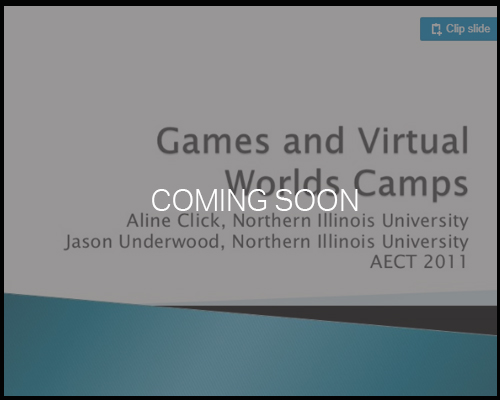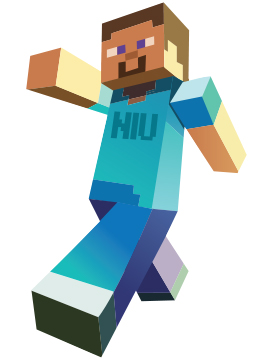
Virtual Worlds
Virtual worlds like Minecraft and Opensim are persistent virtual spaces made available by networked servers, which are accessed by personal computers, and provide players synchronous interactions with other students and virtual objects. Virtual worlds are described as persistent because the virtual objects that are created or brought into the virtual environment remain in-world for other players to interact with even after the creator has logged-off. Interactions between players are expressed and experienced in virtual worlds through the player’s virtual representation called an avatar, with movement (e.g., moving, smiling, sitting, dancing, building), digital creations (terrain, buildings, objects, and scripts), text and/or audio communications including voice, music, and sound effects.
At the Digital Convergence Lab we use virtual worlds in a number of ways. Our primary use of virtual worlds is for our video game design camps to teach middle school students about basic 3D design, building, and navigation. We also use virtual worlds in online teaching at the college level, such as teacher preparation courses, and we support faculty and doctoral students in development and research. For more information on virtual worlds email us at
Placeholder for video >>>

Minecraft at NIU
NIU students, faculty, staff and alum join us to build the NIU campus in Minecraft.
Contact Aline Click aclick@niu.edu for builder access. Guests are welcome to watch the process.
For more information go to minecraft.niu.edu
HIVE - Highly Interactive Virtual Environments
This project is to engage students of the digital generation in critically responding to social issues through highly interactive virtual environments (HIVEs): virtual worlds and computer/online games. Through creating, role-playing, and collaborating in HIVEs, students in Schaumburg High School used the HIVE to explore their identities in their participating communities by designing avatar appearances, and creating virtual art that addresses social issues.





